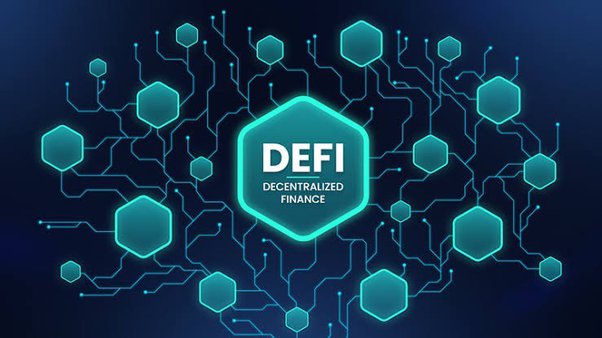
Today, we are going to talk about What is Decentralized Finance-Its Uses, Benefits and Risks. it is shortly known as De-Fi. everything has its own benefits, limitations. De-Fi also has I mentioned them.
Decentralized finance (De-Fi) offers financial instruments without relying on intermediaries such as brokerages, exchanges, or banks by using smart contracts on a blockchain.
De-Fi platforms allow people to lend or borrow funds from others, speculate on price movements on assets using derivatives, trade cryptocurrencies, insure against risks, and earn interest in savings-like accounts.
De-Fi uses a layered architecture and highly composable building blocks. Some applications promote high interest rates but are subject to high risk.
De-Fi revolves around decentralized applications, also known as D-Apps, that perform financial functions on distributed ledgers called blockchains, a technology that was made popular by Bitcoin and has since been adapted more broadly.
Rather than transactions being made through a centralized intermediary such as a cryptocurrency exchange or a traditional securities exchange, transactions are directly made between participants, mediated by smart contract programs.
These smart contracts, or De-Fi protocols, typically run using open-source software that is built and maintained by a community of developers.
- The Benefits & Uses of De-Fi:
De-Fi is permission-less and inclusive. Anyone with a crypto wallet and an internet connection, regardless of where they are, can access De-Fi services. Users can also make trades and move their assets wherever they want, without having to wait for bank transfers or pay conventional bank fees. (Although other crypto-specific fees, such as gas fees, may apply.)
Transactions are in real time. The underlying blockchain is updated the moment a transaction is completed, and interest rates are updated multiple times every minute.
Transactions are transparent. Every transaction on the Ethereum blockchain, which accounts for more than 90 percent of all De-Fi traffic, is broadcast to and verified by other users on the network. This level of transaction data transparency ensures any user can view network activity.
Users can retain custody of their assets using non-custodial crypto wallets or via smart contract-based escrow.
Smart contracts are highly programmable and can be designed to automatically execute, based on an infinite number of variables.
De-Fi data is tamper proof, secure and auditable, thanks to the use of blockchain architecture.
Many De-Fi protocols are open source. Ethereum and other projects are built with open-source code, which is available for anyone to view, audit and build on. Developers can easily connect multiple De-Fi applications built on open-source technology to create new financial products and services, without having to seek permission.
- The Risks of De-Fi:
De-Fi offers new and exciting financial freedoms, but these come with risks. These risks include:
De-Fi technology is immature and has yet to be fully stress-tested at scale over an extended period. Funds may be lost or put at risk. The De-Fi platform Compound, for example, suffered a serious glitch recently during which customers were accidentally sent millions of dollars of crypto.
A lack of consumer protection. De-Fi has thrived in the absence of rules and regulations. But this means users often have little or no protection when things go wrong. No state-run reimbursement schemes cover De-Fi and there are no laws enforcing capital reserves for De-Fi service providers.
Hackers are a threat. While hacking is also a risk in traditional finance, De-Fi’s extended technological architecture, with multiple points of potential failure, increases the so-called attack surface available to sophisticated hackers. For example, “white hat” hackers exploited a smart contract vulnerability in August 2021, stealing $610 million from the De-Fi platform Poly network. Luckily all funds were returned.
Collateral requirements are high. Nearly all De-Fi lending transactions require collateral of at least 100 percent of the value of the loan, if not more. These requirements vastly restrict eligibility for many types of De-Fi loans.
Private key requirements. With De-Fi and cryptocurrency, users must secure the wallets used to store cryptocurrency assets. This is an important requirement for both individual private investors and institutional investors using multi-signature wallets. Private keys, which are long, unique codes known only to the wallet’s owners are used to do this. If a private investor loses their key, for example, they lose access to their funds forever.


